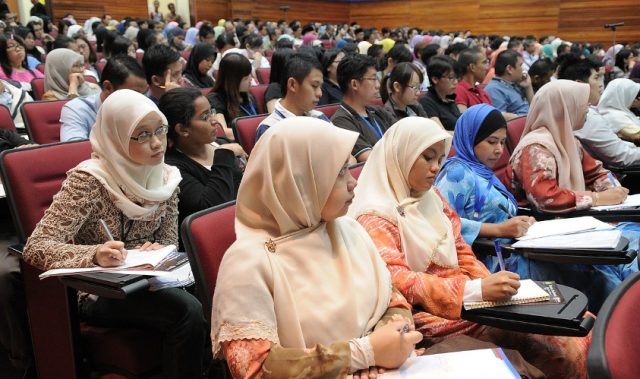
AsianScientist (Mar. 28, 2014) – Japan remains the Asian juggernaut in scientific output, but it may be overtaken by China within one or two years, according to the Nature Publishing Index (NPI) 2013 Asia Pacific published this week.
Japan, which is overcoming the impacts of the 2011 Tohoku earthquake and tsunami with the help of a US$1.8 billion science stimulus package, continues to lead the Asia-Pacific NPI in physics, life sciences and earth and environmental sciences.
Despite the University of Tokyo being knocked off the top of the Asia-Pacific NPI institution rankings for the first time by the Chinese Academy of Sciences (CAS), the institution is still the top contributor to Nature.
China, which is ranked second on the Index, is outpacing Japan in scientific output, and may overtake Japan in Nature publications within one or two years.
Behind third ranked Australia, South Korea has significantly increased its NPI output following a slight drop in 2012. The country is named a possible ‘one to watch’ by the supplement editors, with high levels of investment in science and technology announced by both government and private enterprise.
The Korea Advanced Institute of Science and Technology (KAIST) has risen two places to take top spot above Seoul National University (SNU), which has retained second place. Pohang University of Science and Technology has leapt from eighth to third, with a more-than-threefold increase in corrected count, adjusted for the proportional contribution of collaborative institutions.
Last year’s number one, Yonsei University, could not maintain its exceptional 2012 NPI output and has dropped to seventh spot. It is now just above a newcomer, the Institute for Basic Science (IBS), funded as part of the government’s increased investment in basic science. IBS plans to open 50 research centers by 2017
Singapore holds its own among its bigger Asia-Pacific neighbors, ranking fifth for scientific research output. The country’s multi-billion dollar research and development investment program has been steadily growing over the past decade and its NPI output almost doubled in 2013.
Singapore’s three significant research institutions all rank in the Asia-Pacific top 20. The National University of Singapore (NUS), sixth in the Asia-Pacific, outperformed the top institutions from higher-ranked nations, Australia and South Korea.
Nanyang Technological University (NTU) recorded a 250 percent increase in corrected count to take second place in Singapore and 12th in the region. Third is the national research body, the Agency for Science, Technology and Research (at 19 in the region).
Taiwan, India and New Zealand retain their sixth to eighth places for a third year, each showing substantial growth in their NPI output.
The Asia-Pacific NPI measures the output of research articles from nations and institutes published in the 18 Nature-branded primary research journals over the calendar year to provide a snapshot of research in the Asia-Pacific.
——-
Source: Nature Publishing Group; Photo: Hyougushi/Flickr/CC.
Disclaimer: This article does not necessarily reflect the views of AsianScientist or its staff.
#A*STAR #China #Chinese Academy of Sciences #Institute for Basic Science #Japan #KAIST #Nanyang Technological University #National University of Singapore #Nature Publishing Index #Pohang University of Science and Technology #Seoul National University #Singapore #South Korea #University of Tokyo #Yonsei University












